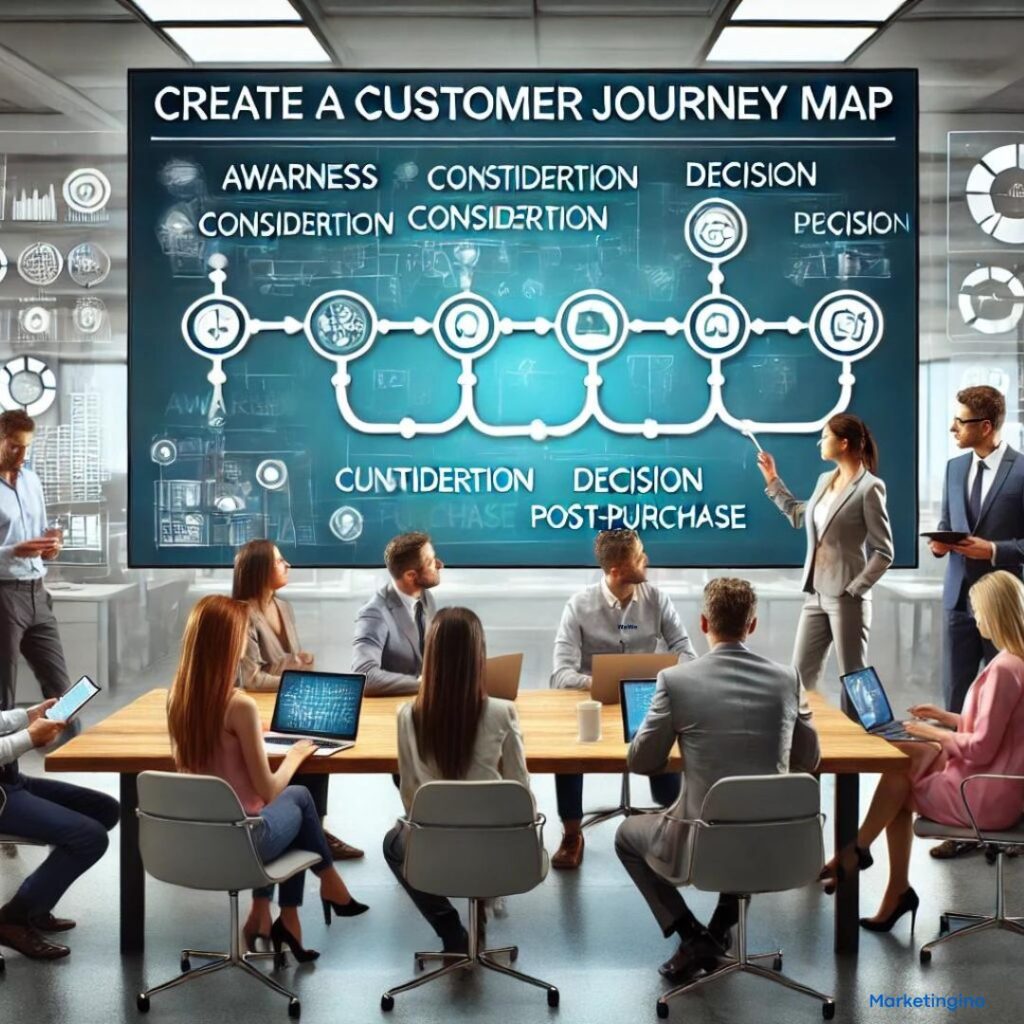In the world of customer experience management, a customer journey map is an invaluable tool. It provides a visualization of the touchpoints a typical customer encounters along their purchase journey, helping businesses understand and enhance each stage of the customer experience. By mapping out these interactions, companies can identify pain points, optimize processes, and create a more seamless and satisfying journey for their customers.
What is a Customer Journey Map?
A customer journey map is a visual representation of the various stages and touchpoints a customer goes through when interacting with a brand. It encompasses the entire journey from initial awareness to post-purchase engagement. This map helps businesses see the journey from the customer’s perspective, identifying key moments that influence their decisions and experiences.
The Importance of Customer Journey Maps
- Enhanced Understanding: Journey maps provide a comprehensive view of the customer experience, allowing businesses to understand the customer’s needs, motivations, and pain points at each stage.
- Improved Customer Experience: By identifying and addressing friction points, businesses can enhance the overall customer experience, leading to higher satisfaction and loyalty.
- Informed Decision Making: Journey maps offer valuable insights that can inform strategic decisions, helping businesses allocate resources more effectively and prioritize improvements.
- Better Alignment: They help align different departments around a common understanding of the customer journey, fostering collaboration and ensuring a consistent experience across all touchpoints.
Steps to Create a Customer Journey Map
- Define Objectives: Determine the goals of your customer journey mapping. Are you looking to improve a specific stage of the journey or understand the entire experience? Clear objectives will guide the process.
- Gather Data: Collect data from various sources, including customer surveys, interviews, and analytics. This data will provide insights into customer behavior, preferences, and pain points.
- Create Customer Personas: Develop detailed personas that represent different segments of your customer base. Each persona should include demographic information, needs, goals, and challenges.
- Identify Touchpoints: List all the touchpoints where customers interact with your brand, from initial awareness to post-purchase. Include both online and offline interactions.
- Map the Journey: Plot the touchpoints on a timeline to visualize the customer journey. Include the actions, emotions, and experiences associated with each touchpoint.
- Analyze and Identify Gaps: Analyze the journey map to identify areas where customers may encounter friction or drop off. Look for gaps in the experience and opportunities for improvement.
- Implement Improvements: Develop strategies to address the identified gaps and enhance the customer experience. Prioritize changes based on their potential impact and feasibility.
- Monitor and Update: Customer journeys evolve over time, so it’s important to regularly review and update your journey map. Continuously gather feedback and data to keep the map relevant.
Best Practices for Customer Journey Mapping
- Involve Cross-Functional Teams: Engage teams from different departments to provide diverse perspectives and ensure a holistic view of the customer journey.
- Focus on the Customer’s Perspective: Always view the journey from the customer’s point of view. Consider their emotions, motivations, and challenges at each stage.
- Use Real Data: Base your journey map on real customer data rather than assumptions. This ensures accuracy and relevance.
- Visualize Clearly: Use clear visuals and concise information to make the journey map easy to understand and actionable.
- Keep It Dynamic: Treat the journey map as a living document that evolves with your customers’ needs and behaviors. Regularly update it to reflect changes.
A customer journey map is a powerful tool for understanding and improving the customer experience. By visualizing the touchpoints and interactions that define the customer journey, businesses can identify areas for enhancement and create a more seamless and satisfying experience. Following the steps and best practices outlined above will help you develop an effective customer journey map that drives customer satisfaction, loyalty, and business success.




